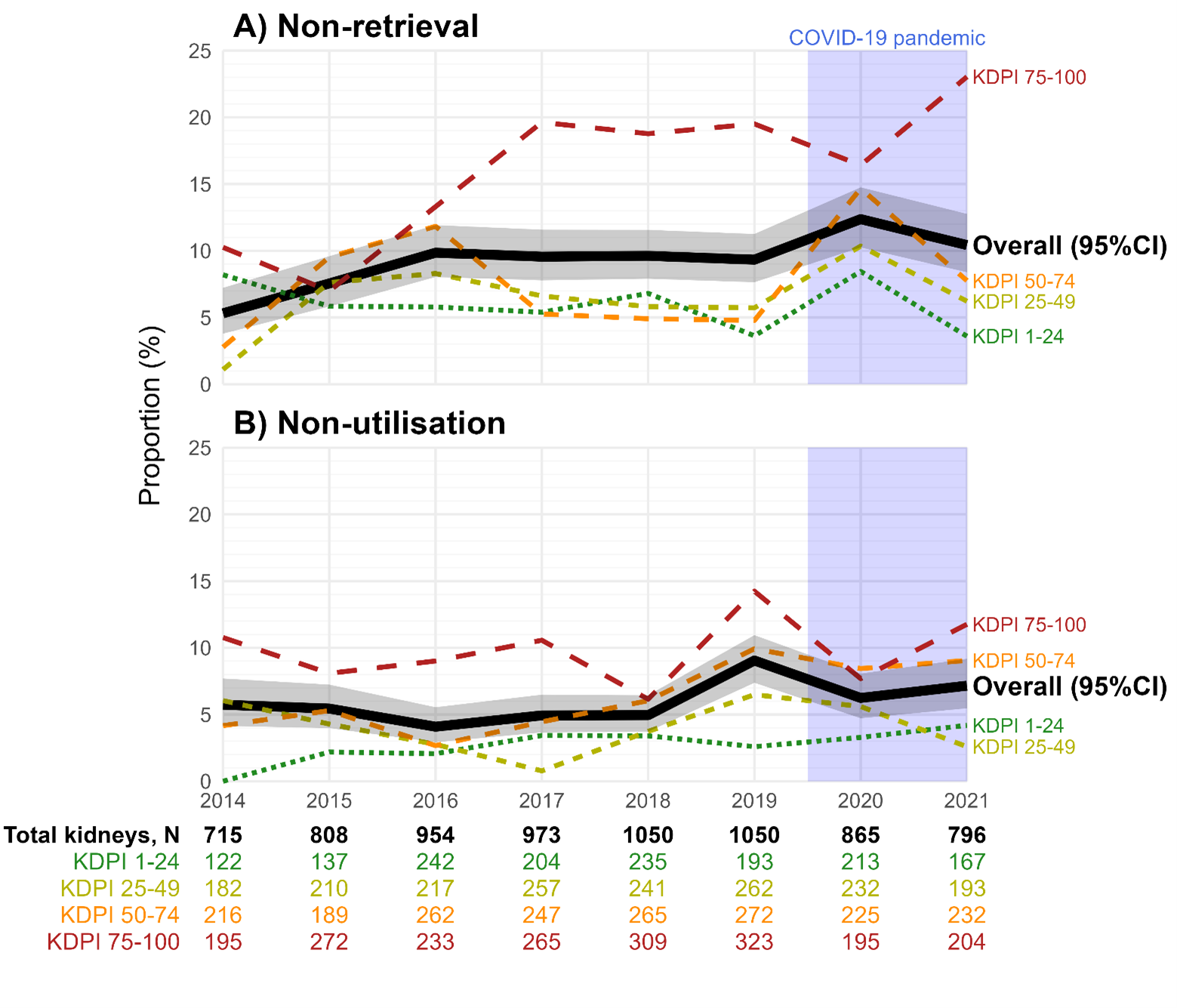Non-retrieval and non-utilisation of deceased donor kidneys for transplantation: and Australian cohort study
Rachel Cutting1, Nicole L De La Mata1, Animesh Singla2,3, James A Hedley1, Helen Opdam4,5, Philip Clayton6,7,8, Kate Wyburn9,10, Elena Cavazzoni11,12, Paul Robertson13, Henry Pleass3,14, Angela C Webster1,15.
1Faculty of Medicine and Health, Sydney School of Public Health, University of Sydney, Sydney, Australia; 2Discipline of Surgery, Sydney Medical School, Faculty of Medicine and Health, University of Sydney, Sydney, Australia; 3Department of Surgery, Westmead Hospital, Sydney, Australia; 4Organ and Tissue Authority, Australian Government, Canberra, Australia; 5Intensive Care Unit, Austin Hospital, Heidelberg, Australia; 6Australia and New Zealand Dialysis and Transplant Registry (ANZDATA), Royal Adelaide Hospital, Adelaide, Australia; 7Faculty of Health and Medical Science, University of Adelaide, Adelaide, Australia; 8Central and Northern Adelaide Renal and Transplantation Service, Royal Adelaide Hospital, Adelaide, Australia; 9Sydney Medical School, University of Sydney, Sydney, Australia; 10Renal Unit, Royal Prince Alfred Hospital, Sydney Local Health District, Sydney, Australia; 11Department of Paediatric Intensive Care, Children's Hospital Westmead, Westmead , Australia; 12Organ and Tissue Donation Service, New South Wales Government, Kogarah, Australia; 13Sydney West Area Health Service, Western Sydney Local Health District, New South Wales Government, Sydney, Australia; 14Westmead Clinical School, University of Sydney, Westmead, Australia; 15Westmead Applied Research Centre, Westmead Hospital, Westmead , Australia
Aims: An efficient organ procurement program must maximise utility of retrieval team activity. We aimed to quantify non-retrieval and non-utilisation rates of deceased donor kidneys.
Methods: Cohort study of deceased kidney donors in Australia 2014-2021 using ANZOD data. Outcomes were non-retrieval (kidneys not retrieved after surgical incision) and non-utilisation (kidneys retrieved but not transplanted). We compared non-retrieval and non-utilisation rates using logistic regression by donor factors (age, sex, blood-group, ethnicity, BMI, smoking, socio-economic disadvantage, remoteness, year, cause of death, resuscitation, pathway, KDPI, side, dual-allocation/en-bloc), and system factors (state/territory of donor hospital, retrieval team, and intended recipient’s hospital).
Results: Among 7,211 kidneys (3,683 donors) accepted for retrieval, 675 (9%) were non-retrieved and 430 (7%) were non-utilised. Crude non-retrieval rates doubled from 5% to 10% between 2014-2021 (p=0.01) while non-utilisation remained around 7% (p=0.1, Figure 1). After adjustment, non-retrieval was greater among donors with KDPI≥75 (OR 4.28, 95%CI: 2.08–8.81, p<0.001), diabetes (OR 1.74, 95%CI: 1.25–2.43, p=0.001), and in recent years (annual OR 1.08, 95%CI: 1.03–1.55, p=0.002), and lower for ECD DCDD (OR 0.46, 95%CI: 0.26-0.81, p=0.01). Non-utilisation was greater for SCD DCDD (OR 1.90, 95%CI: 1.28-2.82, p<0.001), blood group AB (OR 2.05, 95%CI: 1.16-3.64, p=0.03) and in recent years (annual OR 1.08, 95%CI: 1.02-1.15, p=0.01), and lower in Tasmania (OR 0.28, 95%CI: 0.08-0.97) and Queensland (OR 0.57, 95%CI: 0.36-0.92, p=0.03). Documented reasons for non-utilisation lacked transparency but included poor perfusion (17%).
Conclusions: Efforts to maximise transplantation of donor kidneys could focus on improving utilisation of higher KDPI kidneys and perfusion techniques.
